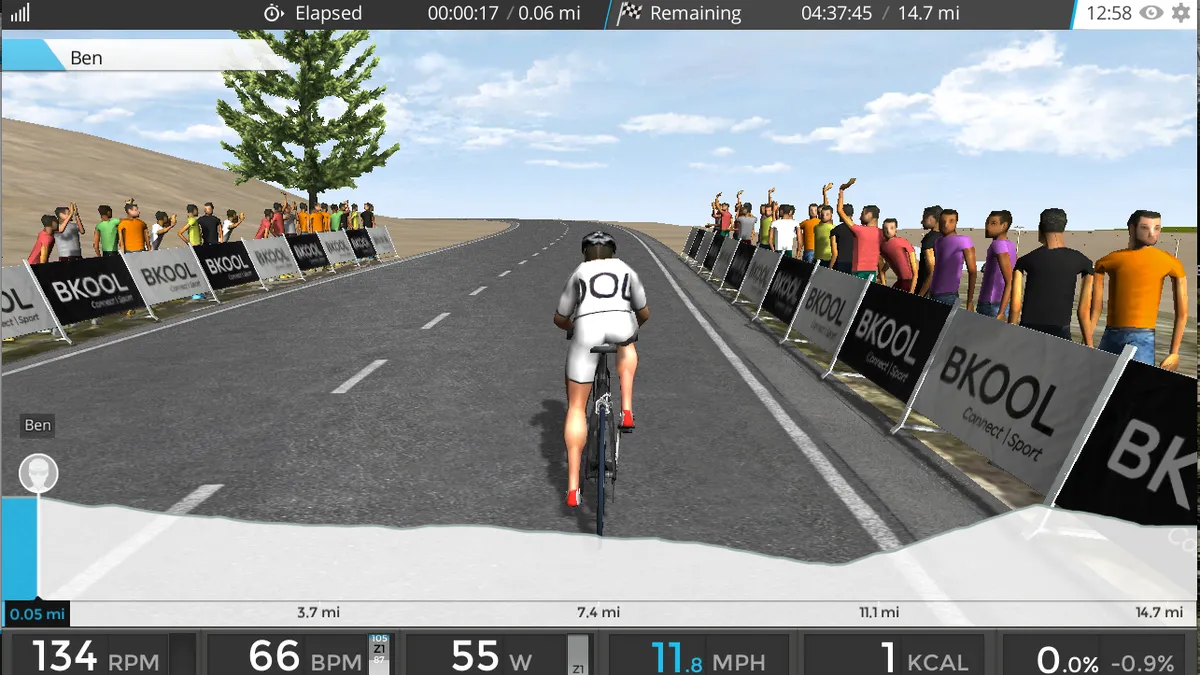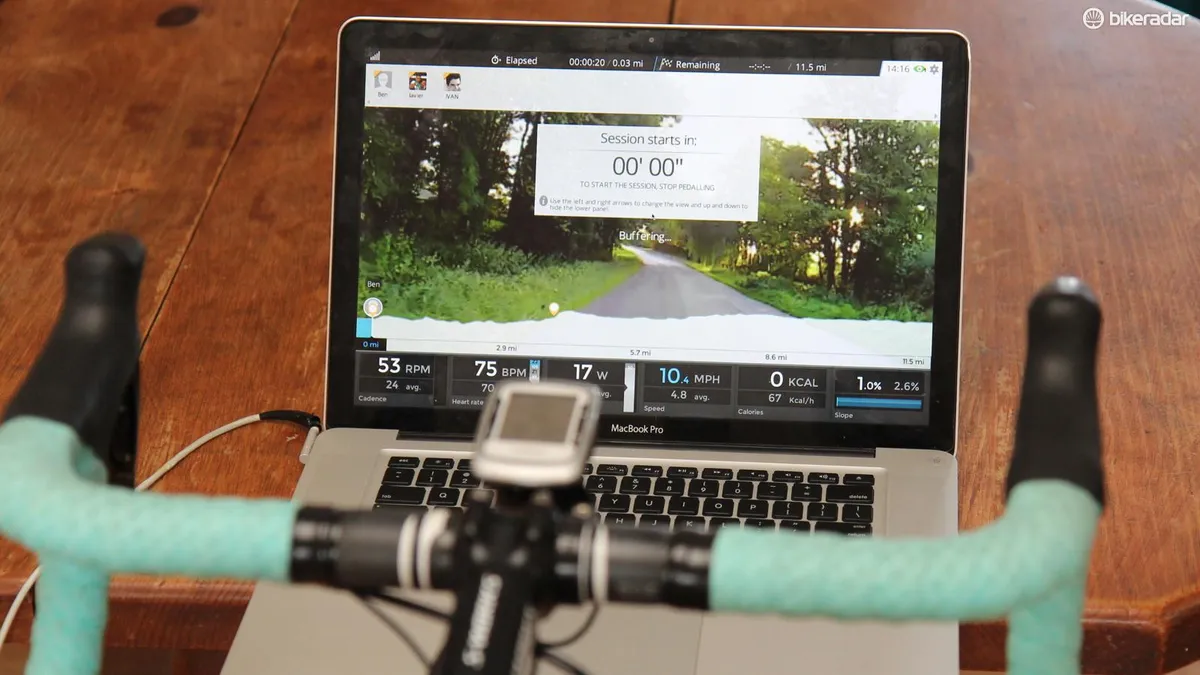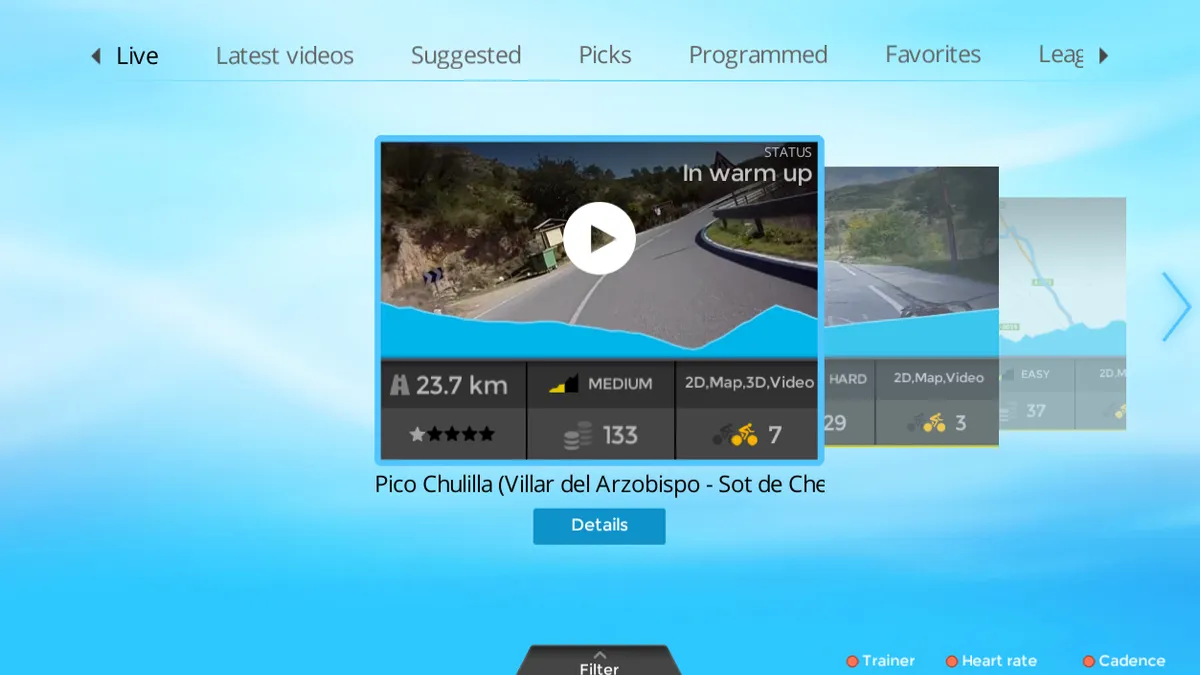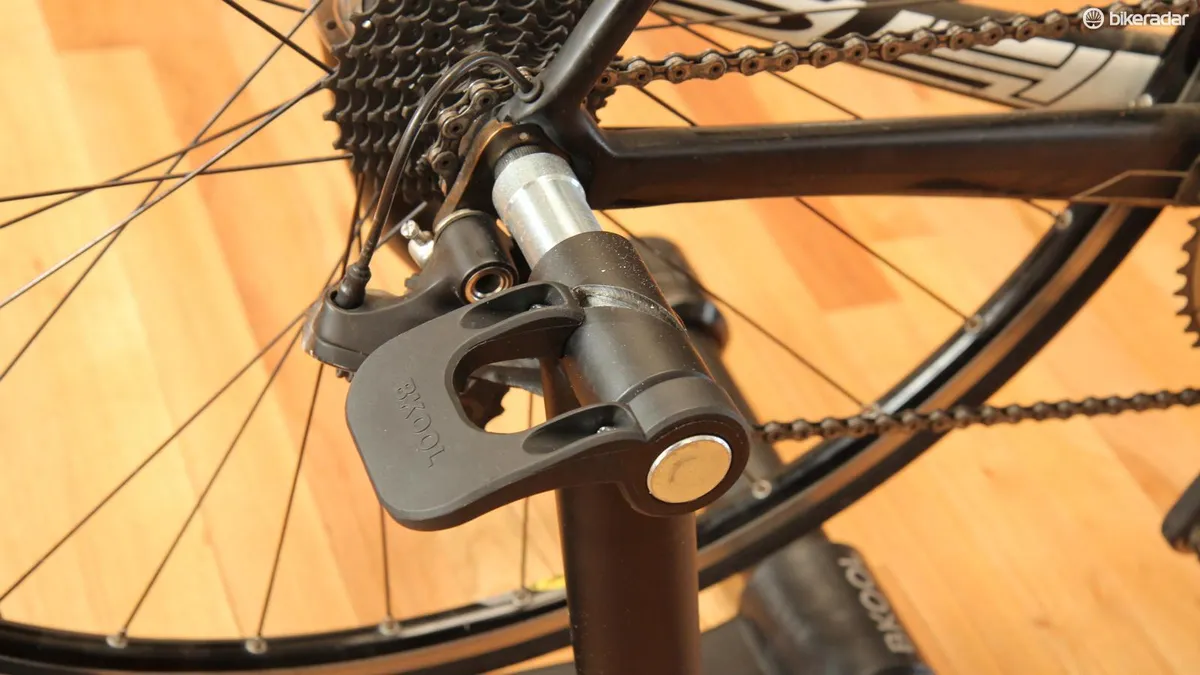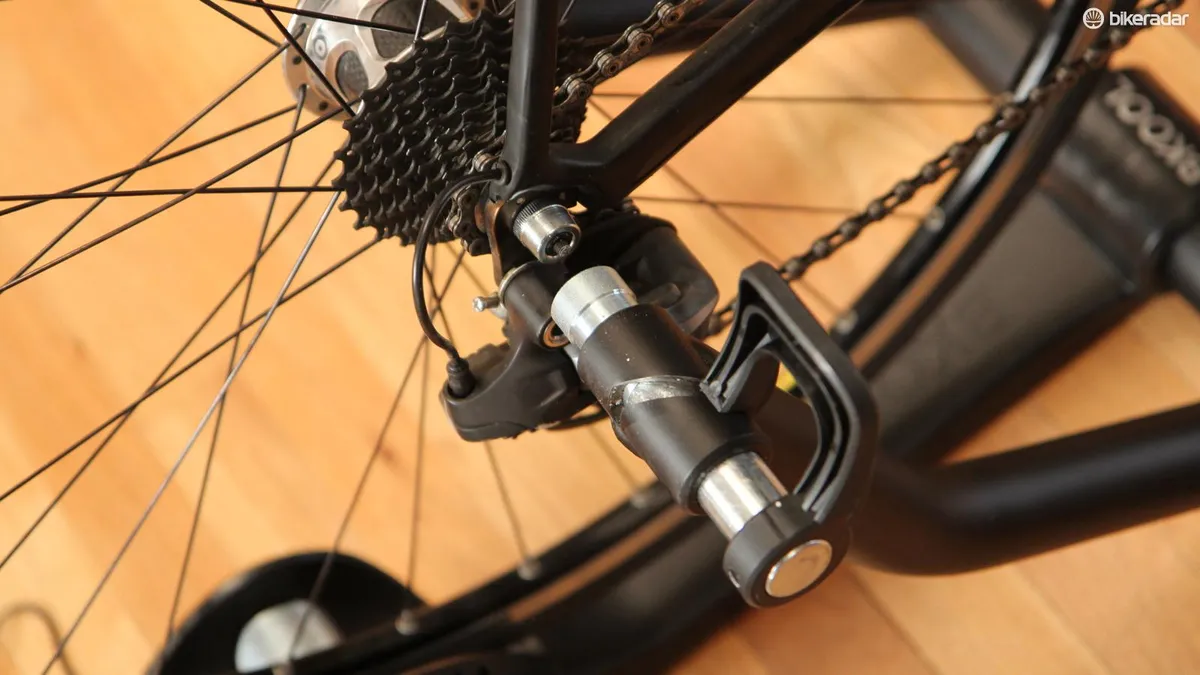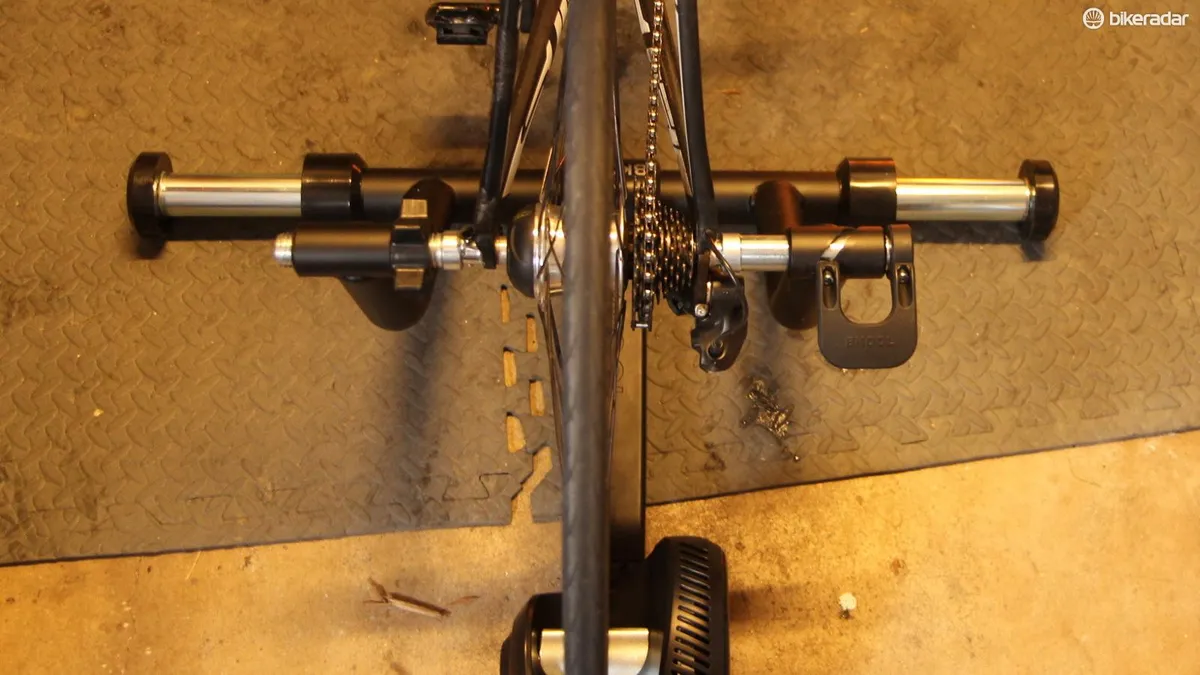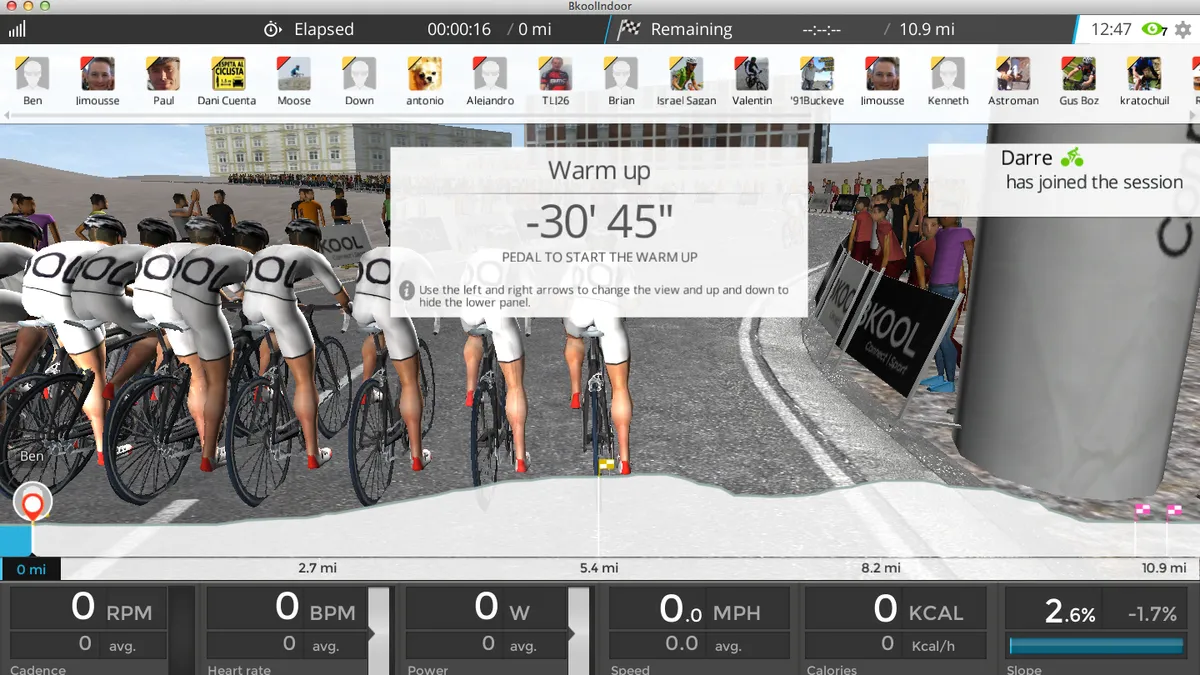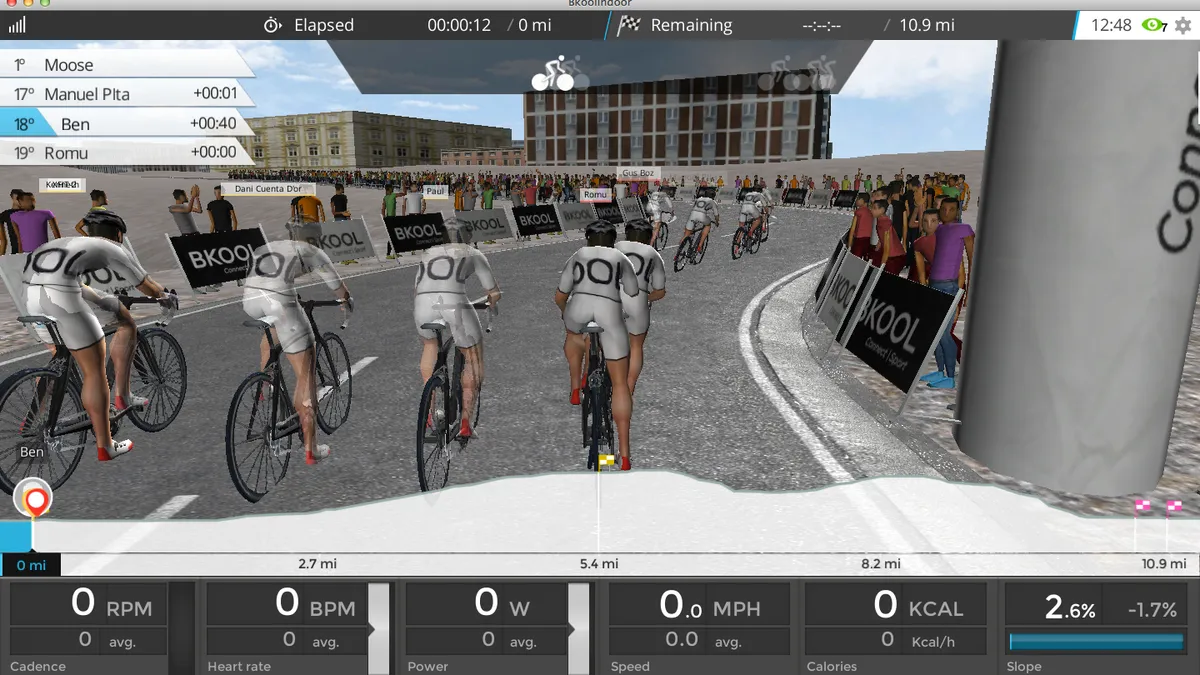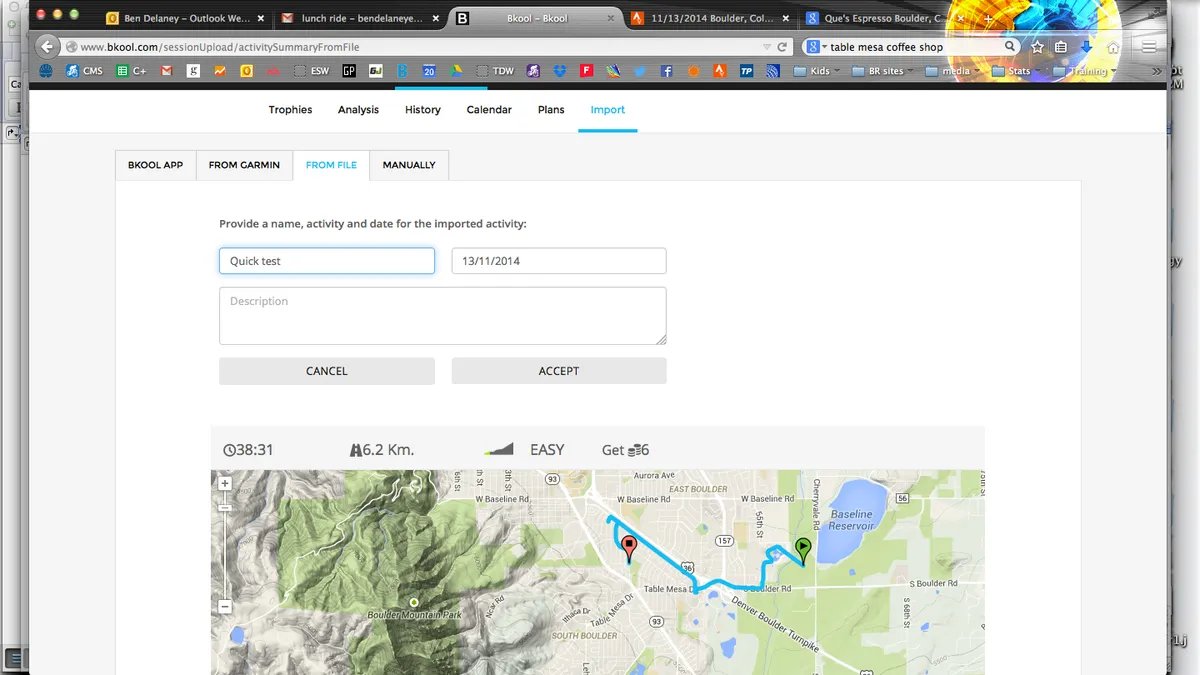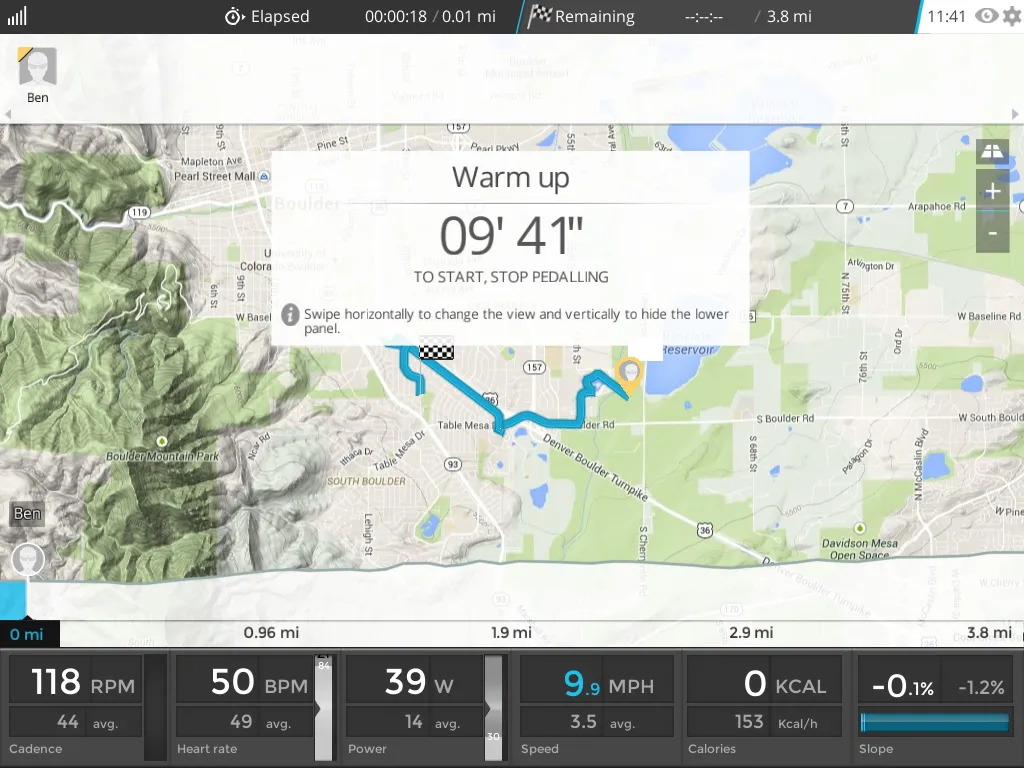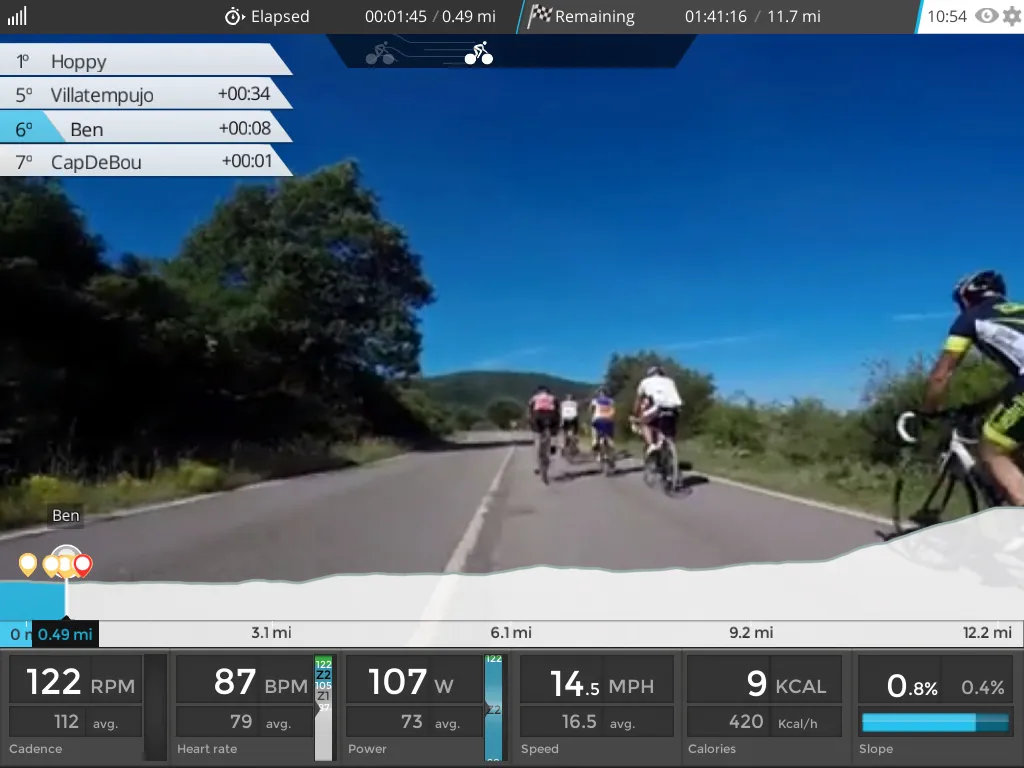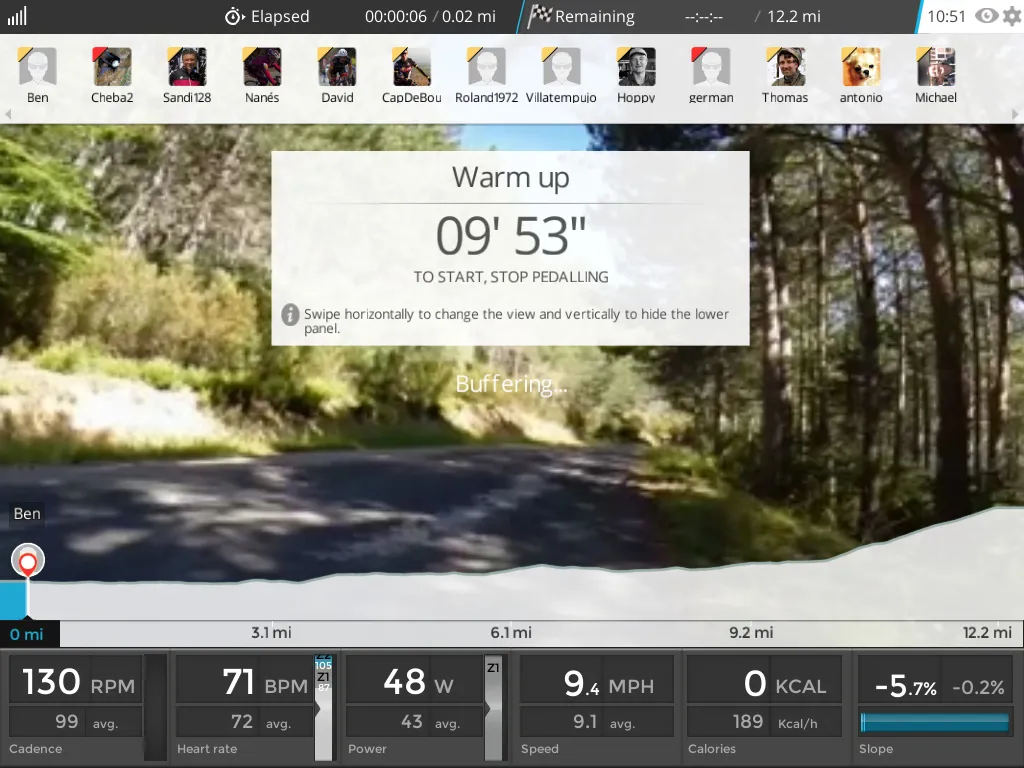The Bkool Pro Trainer is an ANT+ electronic trainer built for interactive 3D training and multiplayer online racing using the company's software, which works on newer PC and Mac computers.
For an electronic trainer with resistance control, the Bkool Pro is a relatively good deal. Although you do get roughly accurate power information and post-ride analysis, however, the Bkool is more of an entertainment/motivation training tool than a hyper-specific training device.
- Highs: Great price for ANT+ electronic trainer with automated resistance control; easy to set up and move; not confined to Bkool software; huge menu of routes, in 2D, 3D and video; ability to compete against others virtually
- Lows: Inaccurate power; stand wobbles when out of the saddle; somewhat boring software graphics
The package consists of the electronic trainer, a power cable, a wheel block and an ANT+ USB stick. Bkool's Pro Trainer interacts with the Simulator software, adding resistance the faster you go, or the steeper the virtual hill.
Using the ANT+ USB stick, you can ride Bkool on Mac and PC. With a Wahoo ANT+ key, you can use a tablet, too.
With the free software, you can ride thousands of routes, but only look at the overhead map view, which is dull. With the premium software (US$15/mo), there are hundreds of courses with video you can ride. You can surf through the library and see who else is riding them, or is scheduled to ride them, so you can compete. And you can ride or compete in a 3D format, where GPS routes are given a 3D treatment and your fellow riders are little moving simulated riders. The Simluator software also acts as a cycling computer, with real-time and average readouts for power, speed, heart rate, time and distance.
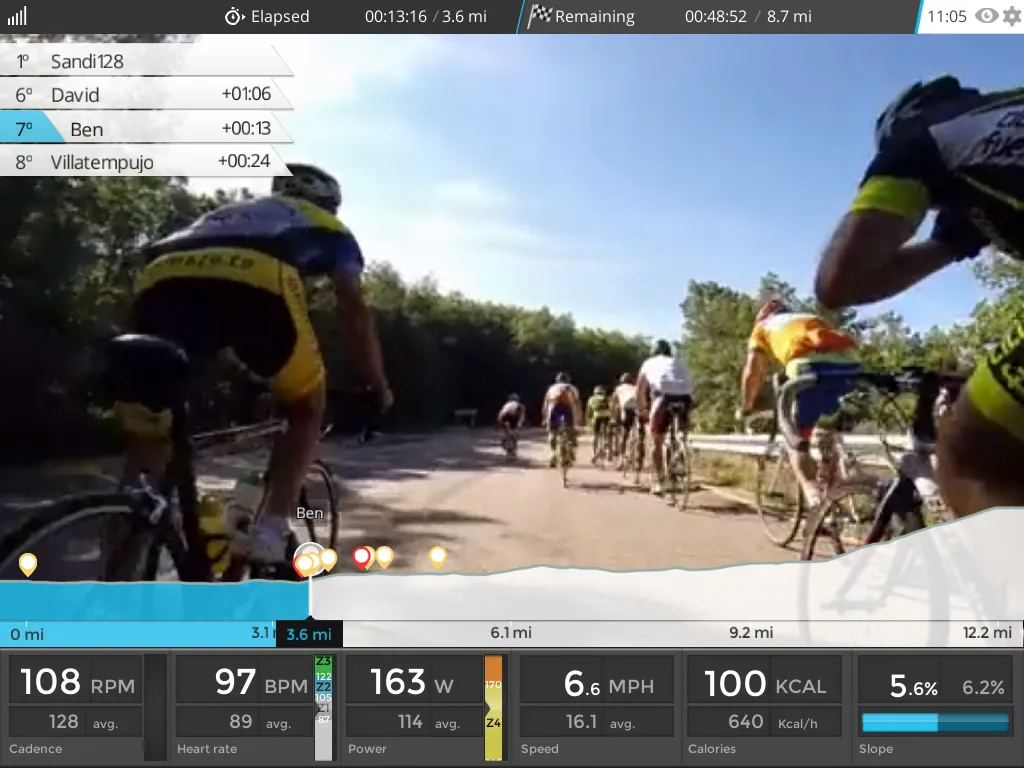
With a premium software subscription, you can ride courses with video at the same time as other with riders elsewhere in the world
One key to virtual riding, in our opinion, is the social or multiplayer aspect. With many of the riders in the Bkool community residing in Spain (where the company was founded), riding on Spanish time makes it more likely that you'll have company. If your computer has a microphone, Bkool has the option to chat with other riders as you ride.
In video format, you can track other riders with a rolling scoreboard at upper left and with the icons along the route profile towards the bottom of the screen. The video itself, of course, doesn't reflect the position of any riders – it's just something to look at as you ride along. The video does seem to sync fairly well with the elevation changes and therefore resistance changes on the trainer. We did appreciate being able to be a virtual tourist around the world, riding routes in Europe we have never - and probably will never - ride in real life.
In 3D format, you can watch yourself and your competitors as 3D characters (as long as they are close) as well as track the little icons along the route profile. Your real-time physio stats are shown at the bottom.
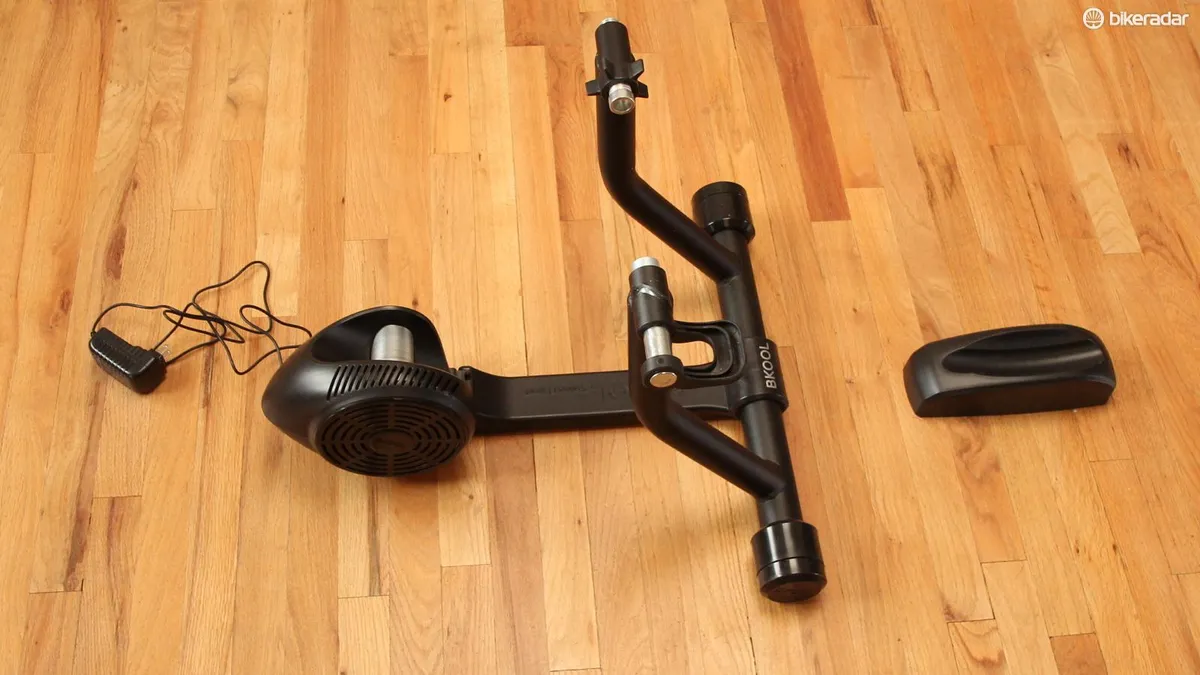
The Bkool Pro Trainer hardware consists of the electronic resistance unit, a power cable and a wheel block
The best way to compete in virtual races is to surf through the menu to see what rides are popular, how many people have signed up to compete, and when. At any given time, you can usually find at least a few people lined up for a route that starts within five or 10 minutes.
As for the hardware, the Bkool Pro Trainer weighs 25.5lb / 11.6kg and clamps easily and securely onto the rear QR. The noise isn't bad; we measured average sound at 94 decibels with a 110db peak. For contrast, we recently measured a Cascade FluidPro trainer at 83/90, and a Wahoo Kickr direct-drive electronic trainer at 86/102.
The weight of the bike and rider keep the rear wheel on the resistance roller, where power is measured. Standing up, or even scooting forward on the saddle, affects power measurement. In general, we found the power accuracy to be okay, within five to 20 watts of PowerTap and Stages power meters we used concurrently. The transitions into and out of climbs are nice and smooth. Having two styles of graphic indicators about what type of slope is coming up is helpful, too.
Based on complaints about prior models, Bkool added slide-out silver stabilizers. While solid when seated, we were still able to rock the entire unit pretty easily when out of the saddle. Another gripe: the front wheel block is about an inch too low.
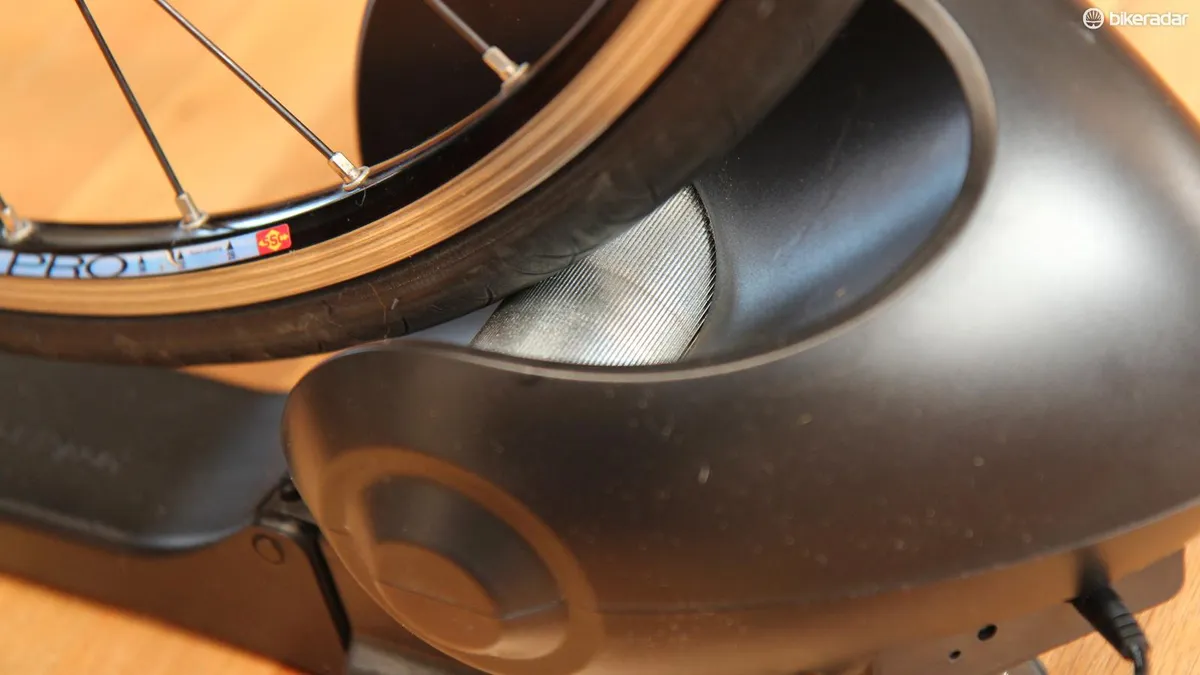
The roller creates and measures resistance. We found the hill replication to be smooth and appropriately difficult for various gradients
Creating a route from a GPS file is impressively easy. We recorded a ride on a Garmin Edge 500, and uploaded it with a couple of clicks.
Once saved, we found our ride and re-rode it virtually. With a video – which you can also upload yourself and sync with your route – it could be cool. in the 2D map format, it's pretty boring.
You can also manually create routes, specifying length and slope (or gradient). What you can't do, however, is specify resistance by wattage.
Ultimately, if you are keen to do structured training with power, the Bkool probably isn't your best bet. But if you're looking to increase your indoor training time through some fun visual stimulus and virtual competition, then it's a good option.

